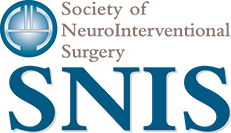By: Dr. Adam Arthur
To survive the deadliest type of stroke, patients need to be treated fast and they must be taken to the right center.
I was reminded of this recently when a man had a stroke in the middle of a flight from Salt Lake City to Atlanta. Because of the quick action of those onboard, the plane landed mid-flight and the patient reached Methodist University Hospital in Memphis, Tennessee, with enough time to get surgery.
As the flight crew diverted the flight to Memphis, the Mobile Stroke Unit from the University of Tennessee Health Science Center pulled onto the airport tarmac. The patient was taken from the plane and immediately had a CT scan on the Mobile Stroke Unit to identify the stroke. When the Mobile Stroke Unit realized his basilar artery was completely blocked (the deadliest kind of stroke), they gave him the clot-busting drug TPA before bringing him to Methodist University Hospital, where a team awaited him in a specialized operating room.
I’m happy to report that the patient went home only four days after his stroke. He wouldn’t have lived without the flight crew, emergency personnel, and nurses who jumped into action so he could be treated as quickly as possible.
We know how fortunate we are to have the grant-funded Mobile Stroke Unit. Those of us who do this work understand that having medical professionals who can identify the type of stroke a patient has and take them to a Level 1 stroke center right away is essential to ensuring that these patients not only survive a stroke but avoid lasting disabilities.
Unfortunately, most stroke patients don’t get this outcome.
I’m proud to take part in the Get Ahead of Stroke campaign, an initiative of SNIS that strives to improve stroke systems of care across the country through education and advocacy. Our goals are that every state will require emergency personnel to take severe stroke patients to a Level 1 stroke center and for personnel to have the necessary information to identify the type of stroke and triage and transport patients accordingly. These changes will ensure that patients in every corner of the country have access to neuroendovascular stroke surgery if they need it.
These are no small goals, and they will require patience and perseverance to achieve. However, those of us dedicated to this campaign believe that by working together, we can see more outcomes like this patient’s and help more people #SurviveStroke.
Dr. Adam Arthur is a member of the Semmes Murphey Clinic, the University of Tennessee Department of Neurosurgery. He is Chairman of Neurosurgery at Methodist University Hospital in Memphis, Tenn., and the president-elect of the Society of NeuroInterventional Surgery.

